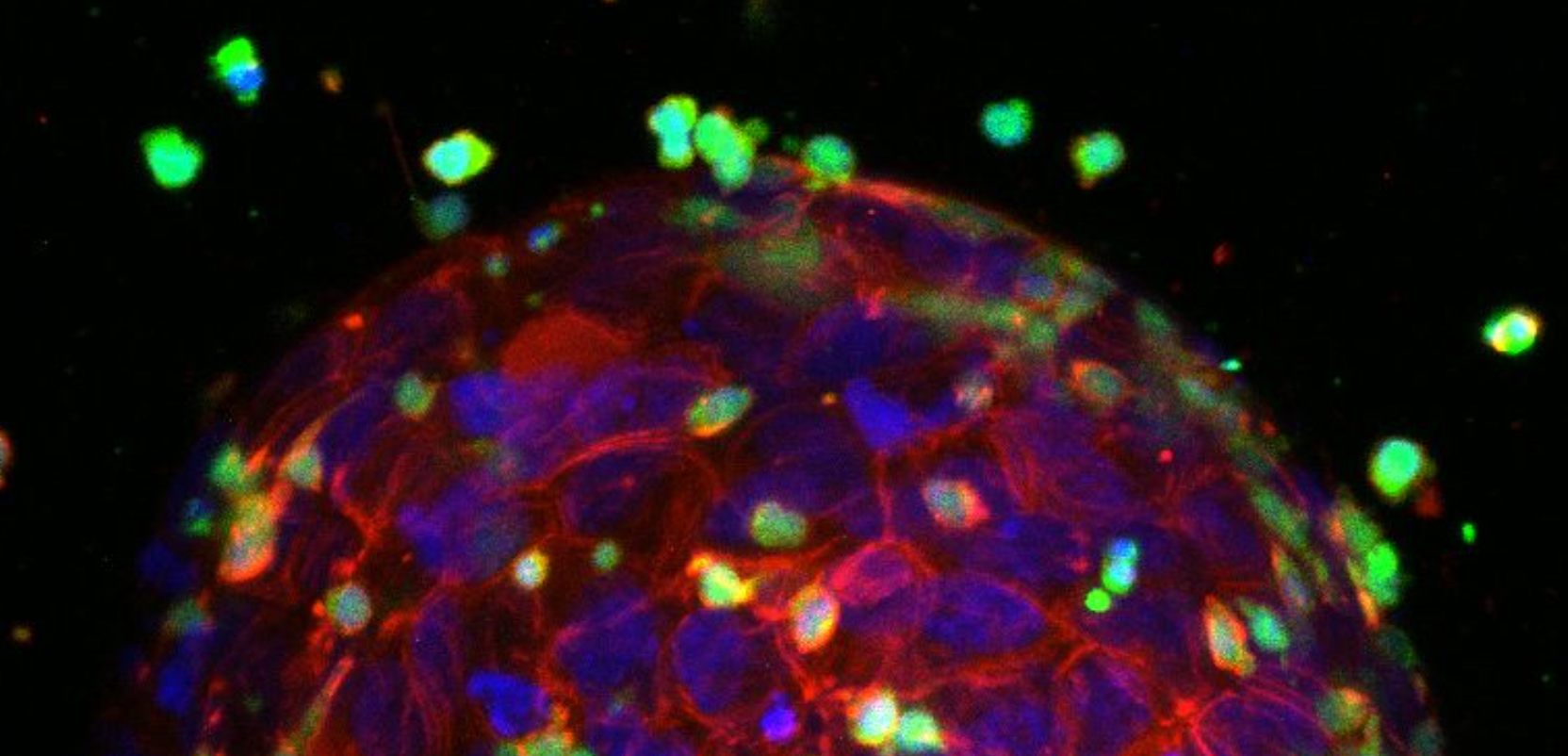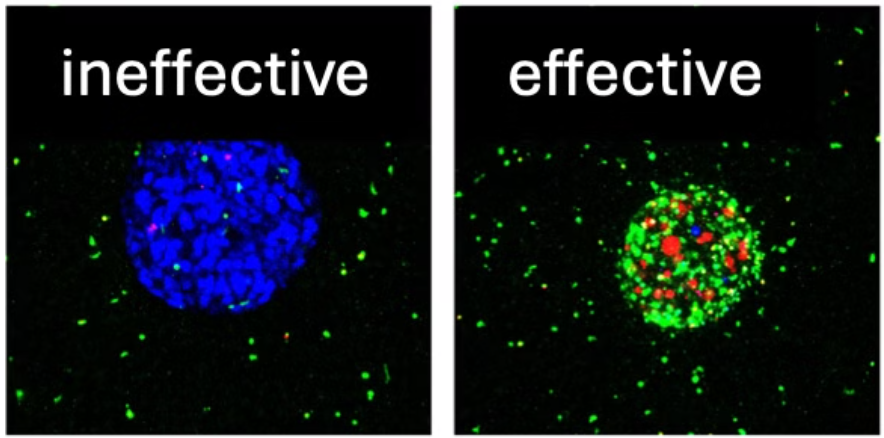

Immunotherapy Cancer cells are able to evade detection, using various strategies to evade the immune system and even fight off attacks. Immunotherapy helps the immune system identify, attack and ultimately destroy cancer cells. This can be achieved by boosting the immune system with drugs (which makes cancer cells easier to detect) or by artificially boosting T cells. Research at Leiden University focuses on innovative testing strategies for these last two approaches.


△3D printed tumor models are used to monitor real-time interactions with immune cells. Image source: Liao et al.
T cells are specialized immune cells capable of attacking cancer cells, and receptors on their surface act as antennas to identify cancer cells. By isolating a patient’s T cells, equipping them with better antennae, and transfusing them into the bloodstream, the T cells can be modified to recognize and attack cancer cells more effectively. Bispecific antibodies use one tentacle to bind to T cells and the other tentacle to bind to cancer cells, thereby helping the T cells locate and destroy cancer cells. Traditionally, new immunotherapies were tested by growing tumor cells, T cells, and sometimes antibodies together in a dish and observing their interactions. However, this approach does not accurately reflect the complexity of the human body. “On a plate, T cells grow among tumor cells and can immediately start killing them,” said Erik Danen, professor of cancer drug target discovery. “The T cells must first make their way to the tumor, which adds complexity.” Real-time monitoring of 3D printed tumors Researchers developed a more realistic biomimetic model using 3D printed tumors embedded in collagen gel. “This gel simulates human tissue,” said Anita Liao. “We used a 3D bioprinter with a special needle to inject tumor cells into the gel, creating small three-dimensional tumors. They grew and invaded the gel, much like real tumors in the body. Similar . Next, add T cells which must find their way to the tumor. This method is high throughput and suitable for testing T cells and enhanced antibodies.


△ Tumors with the addition of inactive (left) and active (right) antibodies. Green indicates T cell recruitment, red indicates tumor destruction. Image source: Liao et al.
Additionally, the team created a system to monitor these 3D printed tumors in real time using an automated microscope, allowing them to observe what was happening in and around the tumors and track the cells immune. “Not only can we see if and how enhanced T cells and antibodies work, but we can also study the defense strategies employed by tumor cells,” explains Erik Danen. Use effect The new method has proven effective in testing a variety of bispecific antibodies. The researchers found that not all antibodies were effective, as previous models predicted. Erik Danen says: “In the new, more complex model, we observed that the most effective antibodies not only activated T cells, but also triggered the production of signaling molecules that attracted more T cells. With the old approach, the antibodies didn’t stand a chance. “Our new method will help identify the most effective antibodies for further clinical development.” New treatments for breast and eye cancers
The team used their model to test improved T cell receptors. For example, they are evaluating a receptor developed by immunologist Mirjam Heemskerk of Leiden University Medical Center to treat eye cancer. They are also collaborating with the Reno Debets Immunology Laboratory at the Erasmus Medical Center in Rotterdam to test new receptors for the treatment of breast cancer. Erik Danen said: “Our model successfully predicted which receptors are effective in mouse models. These improved receptors are now ready for clinical trials in real patients. We hope that our study represents an important step in the selection of options for cancer patients. an important step forward in the development of optimal treatments.
Source: Antarctic Bear
Daguang focuses on providing solutions such as precision CNC machining services (3-axis, 4-axis, 5-axis machining), CNC milling, 3D printing and rapid prototyping services.

















